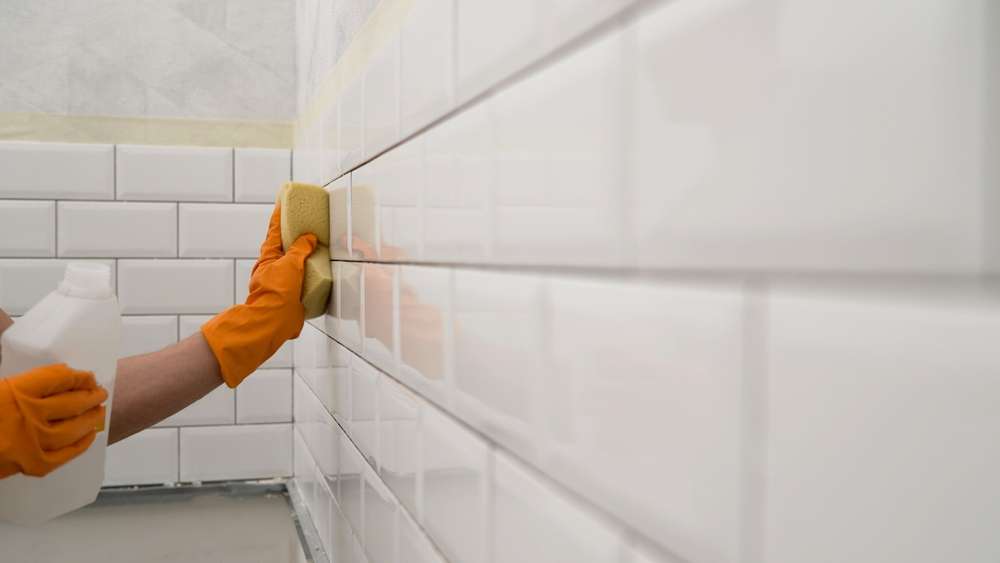Strategies for maintaining grout and tile longevity in wash spaces
Practical strategies can extend the life of tiles and grout in wash spaces by addressing moisture, ventilation, waterproofing, and routine maintenance. This article outlines renovation considerations, sensible fixture choices, and simple habits that preserve surfaces while supporting accessibility and sustainability goals.

Tiles and grout are durable surfaces, but they require targeted care to remain functional and attractive. Effective maintenance begins with understanding how moisture and humidity interact with materials, and how renovation choices—such as fixtures, plumbing layout, and waterproofing—affect long-term performance. This article provides actionable guidance on ventilation, cleaning, lighting, storage, and sensor-driven monitoring to reduce deterioration and support sustainable upkeep.
How does renovation affect tiles and grout?
Renovation choices set the foundation for tile longevity. Selecting the right substrate, thinset, and grout type during a remodel reduces early failures. Consider tile size and material relative to movement from plumbing or structural shifts, and specify grout with appropriate flexibility for areas prone to stress. During renovation, coordinate plumbing and fixture placement to avoid cutting tiles later, which creates weak points where grout can crack. Investing time in proper surface preparation and professional installation reduces recurring maintenance and preserves aesthetics over years.
How to control moisture and humidity?
Moisture is the primary culprit behind grout deterioration and tile staining. Controlling humidity involves layered strategies: ensure effective waterproofing at wet zones, use grout sealers where appropriate, and maintain consistent airflow. Small practices—wiping down wet areas, drying shower surfaces regularly, and avoiding prolonged water pooling—limit moisture penetration. In spaces with high humidity, a dehumidifier or improved ventilation schedule helps prevent mold development and extends grout life by reducing prolonged dampness that accelerates breakdown.
What ventilation and sensors help preserve surfaces?
Proper ventilation and humidity sensors are practical upgrades. Exhaust fans sized correctly for the room and vented to the exterior remove warm, humid air after showers. Consider humidity sensors that trigger fans automatically to maintain consistent moisture levels without relying on user behavior. Smart controllers and timers can also run fans long enough to clear dampness. These measures reduce condensation on tiles and grout and decrease the frequency of mold treatment and deep cleaning, preserving surfaces and reducing maintenance time.
How does waterproofing protect tiles and grout?
Waterproofing is a preventative layer that keeps moisture out of substrates and reduces the load on grout. Use waterproof membranes or liquid-applied barriers in showers, behind tiles, and at floor-to-wall transitions. Properly integrated waterproofing prevents water from reaching structural materials, which can cause swelling and tile loosening. Complement waterproofing with well-sealed grout lines and quality caulks at joints and around fixtures. Together, these steps provide a resilient defense that reduces repair needs and supports overall durability.
What maintenance practices improve grout longevity?
Routine maintenance is essential: clean grout with pH-neutral cleaners to avoid etching and remove soap scum or mildew promptly. Periodic inspection reveals small cracks, loose tiles, or grout deterioration before they become major issues; repairing and regrouting localized areas is less disruptive than full replacement. Seal grout where recommended—especially porous varieties—and refresh sealer on a schedule based on traffic and exposure. Avoid harsh abrasives and steam cleaning on delicate grout types; choose methods suited to the materials specified during installation.
How to consider lighting, storage, accessibility, and fixtures?
Lighting and storage decisions influence how a space ages. Good lighting reveals areas that need cleaning and discourages mold growth by reducing cool, damp shadows. Organize storage to minimize prolonged contact between wet items and grout lines—use shelving that allows airflow and avoid containers that trap moisture against tiled walls. Fixture selection and plumbing layout should minimize splashing onto grout and facilitate easy access for maintenance tasks; accessible designs also simplify future repairs, supporting longer tile life while meeting usability and sustainability objectives.
In summary, grout and tile longevity in wash spaces depends on coordinated choices across renovation, waterproofing, ventilation, and everyday care. Address moisture management through proper barriers, well-sized exhaust systems, and sensor-driven controls. Use appropriate materials and installation methods during renovation, maintain regular cleaning and inspection routines, and design storage and lighting to reduce conditions that accelerate wear. These combined strategies create resilient, low-maintenance wash spaces that preserve performance and appearance over time.





